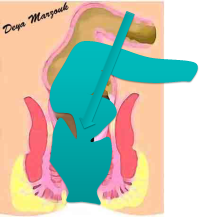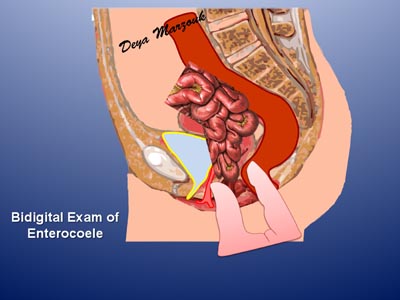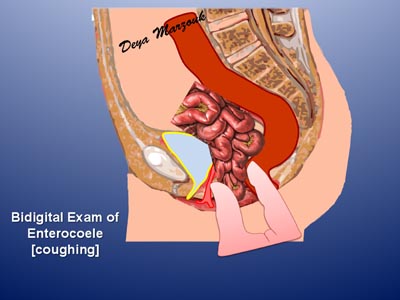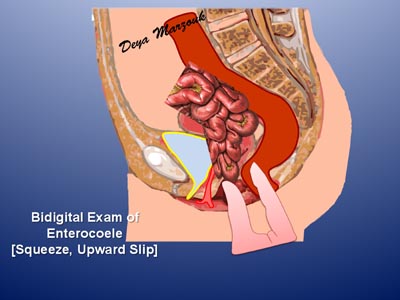
Obstruted Defaecation Web

| Enterocoele & ODS |
|
Enterocoele is a term used to generally describe abnormal descent of the small bowel in a deep pouch of Douglas. Rarely patients are born with a congenitally deep pouch of Douglas, secondary to failure of complete fusion of the rectovaginal septum. More commonly a deep pouch of Douglas is acquired secondary to weakened pelvic floor from multiple pregnancies and deliveries, following hystrectomy and also from long standing chronic straining. Enterocoele is easy to detect using a bidigital examination of the rectovaginal septum. An enterocoele reaching all the way down to the perineum is easy to detect bidigitally & characteristically slips up on approximation of the index & thumb. A higher enterocoele is still easy to detect by an experienced clinician, but a cough helps to make it more noticeable.
Enterocoeles are also detected on proctography [especially if patient is given small bowel contrast] and on MR proctography. Enterocoele can be an important cause of ODS in a small number of patients. In contrast to the situation sometimes called physiological enterocoele, where abdominal straining is transmitted to the UPPER rectum, HELPING defaecation, deep enterocoeles lying anterior to the lower rectum transmit straining to the LOWER rectum OBSTRUCTING defaecation
An enterocoele is repaired by closure of the pouch of Douglas [culdoplasty or cul-de-plasty], normally as a part resection-rectopexy |


